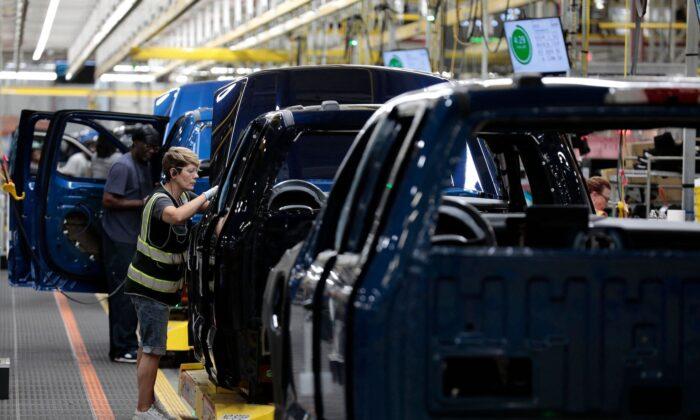U.S. industrial production unexpectedly slipped in May, after two months of gains.
Factories in the mid-Atlantic region saw a decline in activity for the first time since 2021 in June, according to the Federal Reserve Bank of Philadelphia.Industrial production, which measures factory, mining, and utility output, is 0.3 percent below its year earlier levels.
The latest news adds to signs of slowing economic growth, as housing and consumer spending began to dip, due to high inflation and rising interest rates.
Home construction across the United States fell sharply in May, the Commerce Department said last week.
High Interest Rates
The manufacturing sector, which accounts for 11.3 percent of the U.S. economy, was hit by a shift in consumer spending from goods to services, in addition to the negative effects of higher borrowing costs.Manufacturing output still rose by 0.1 percent in May, after gaining 0.9 percent in April, according to the Fed.
Data for April was revised lower to show a 0.9 percent rise in industrial production instead of the 1.0 percent as previously reported.
Still, the gain in production last month was in line with economists’ expectations.
“With domestic consumer goods demand also likely to remain under pressure as surging interest rates weigh on spending on durables, the manufacturing sector will probably continue to struggle over the coming months,” Andrew Hunter, Senior U.S. Economist at Capital Economics, wrote in an analyst note.Vehicle production rose 0.2 percent last month after accelerating 9.8 percent in April, while output of durable goods increased 0.3 percent, and production of nondurable goods slipped 0.1 percent.
However, when excluding auto production, total industrial output fell 0.2 percent.Utilities output fell 1.8 percent in May, for the second straight month, as electric utilities saw losses, while natural gas utilities remained the same.
Mining output in May, which includes oil and natural gas and is driven primarily by decreases in drilling, fell 0.4 percent after a 0.3 percent gain in April.
Industrial Sector Low Output
Capacity utilization for the industrial sector, a measure of how firms best use their resources, fell to 79.6 percent last month from 79.8 percent in April.The measure is currently 0.1 percentage points below its 1972–2022 average.
Businesses carefully managing inventories are also adding to the pressure on manufacturing.
Private inventory investment by businesses rose at its slowest pace in a year and a half in the first quarter, which is also putting pressure on manufacturing.
The Institute for Supply Management (ISM) described customer inventories in June at levels “likely not conducive to future output growth.”
The ISM’s measure of national factory activity remains below the 50 threshold, which indicates a contraction in manufacturing.
The seven straight months of below 50 activity is the longest time it has been this low since the Great Recession.
Reuters contributed to this report.




